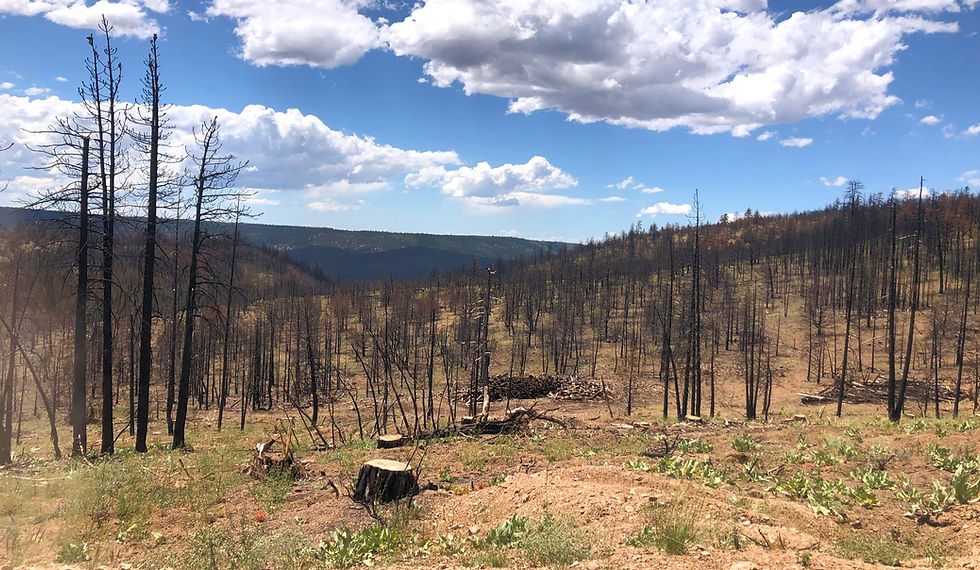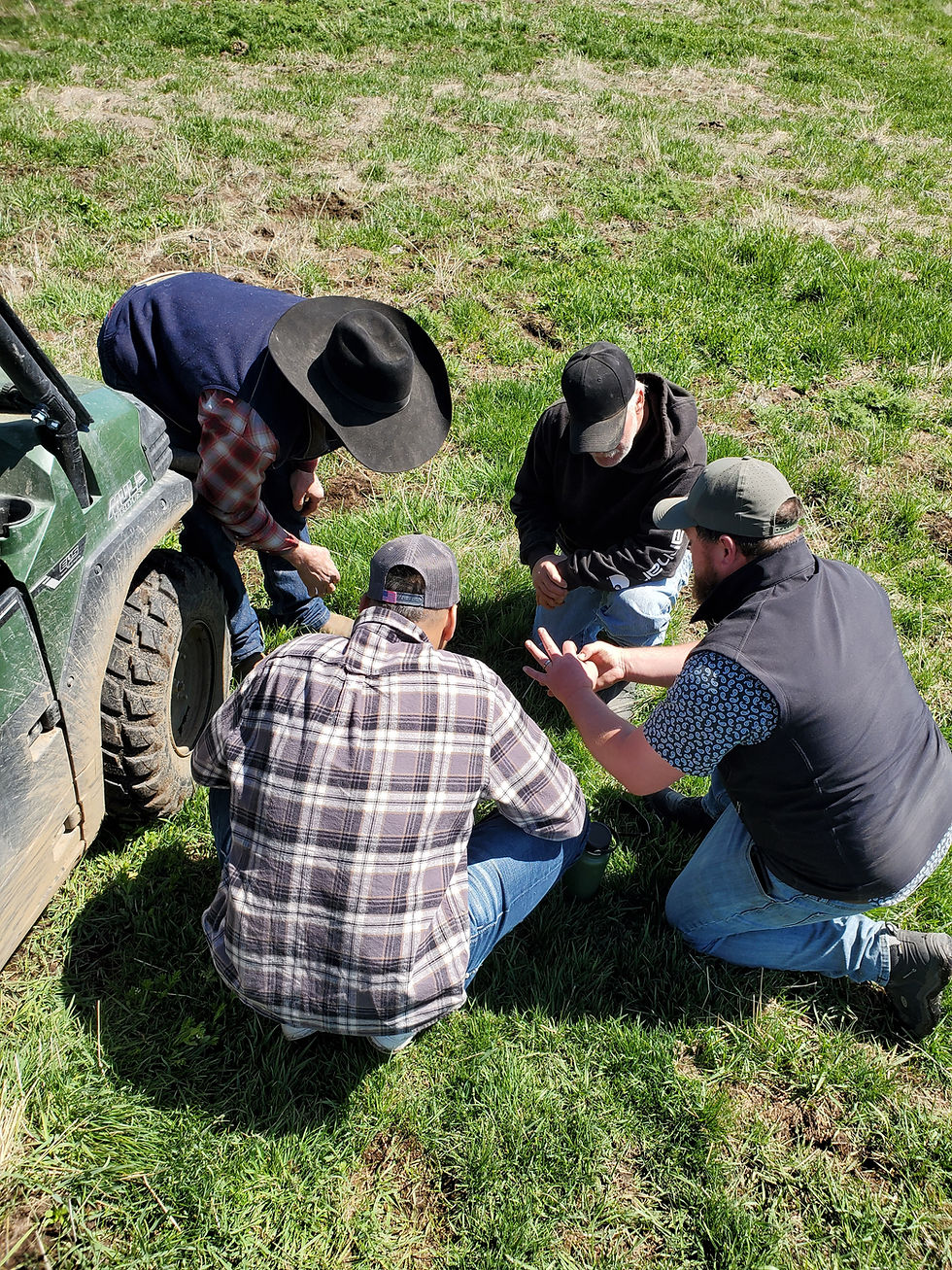The Burn Blog
- devilsgardenucce

- Jul 28, 2021
- 3 min read
By Chase Bergeron and Rachael Stucke

Burn sites illustrate a stark contrast between life and death in forests.
During the third week of June, Chase and Rachael partnered with the Modoc National Forest Botany Department to conduct field surveys for invasive and endangered/sensitive plant species on several burn sites in the Modoc National Forest. These designated sites have been allocated for salvage logging.
With increased wildfire severity and occurrence in California it is important to look at different forest management strategies before and after a fire. Postfire harvest or salvage logging is a strategy that involves the removal of timber from an area that is disturbed by fire. Considering the removal method, timing, and size of the area, salvage logging can mitigate the impact of future fire by decreasing the amount of fuel. Not only does salvage logging help to protect forests from future burns, the removal of trees for lumber aids in habitat restoration and supports the rural economy. Before logging can begin, each site must be surveyed by different departments for any historical or biological resources that need to be protected.
Chase and Rachael spent the week hiking through burn sites, identifying native plant species, keying out unknown species, and sorting through a lot of ash. Below are their main takeaways from this learning experience.

Chase surveying the forest floor for plant species.
Chase:
Cataloging various plants with the Forest Service and allowed me to
experience something new, both through new keying plants and working in a burn site. One of the first sights that stood out to me was the new growth. The ability of the forest to regenerate after a disturbance is quite awesome. It was also a learning experience as I was able to be a part of stakeholder interaction.I gained a lot through this experience because I was able to directly contribute to activities that are a critical part of the Forest Service’s role in balancing stakeholder interests. The timber sale is important as it will provide us with wood that is vital to everyday products, and research indicates that

large quantities of dead trees on the landscape will create dangerous fuel loads. The conservation of species is equally as important. With that being said, I am very satisfied that we located Ivesia paniculata, a sensitive species also known as Ash Creek Mousetail.
Ivesia paniculata (image from Calscape)
Rachael:
This experience was my first time working with the U.S. Forest Service and visiting a burn site. I was astonished by the extent of the damage that had occurred while being equally impressed by the amount of life that was growing from the black ground. While the surveying work consisted of a lot of hot days looking at plants, I came to find a new appreciation and understanding of the inner workings of federal services. I learned that each burn site first has to be surveyed and picked out by logging crews as areas with salvageable lumber, then hydrology, botany and archeology groups have to come through those areas to make sure nothing will be disturbed if logging crews came through. For a long time, I thought that government action was a slow process because people did not want to work quickly. I have since realized that there are many different processes that must happen in order for any change to occur. After doing the groundwork, I have developed a deeper understanding on the amount of care and consideration the Forest Service employs when surveying these sites. This has given me a newfound appreciation for complexities of governmental work and respect for the amount of time the process takes.

Abandoned truck found along the road to our next site.
_
You can find out more about the USFS and their post-fire management here and additional information on Ash Creek Mousetail (Ivesia paniculata) here.




Comments